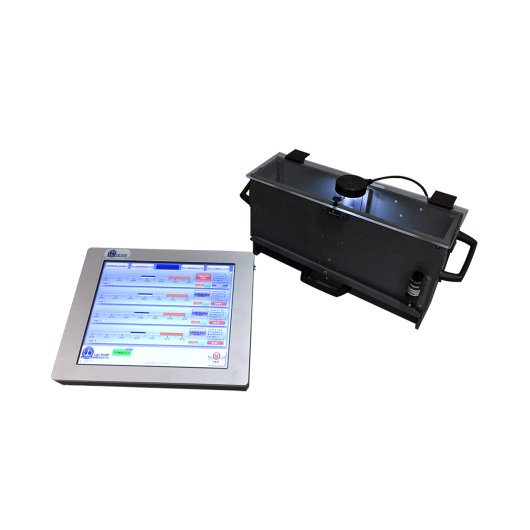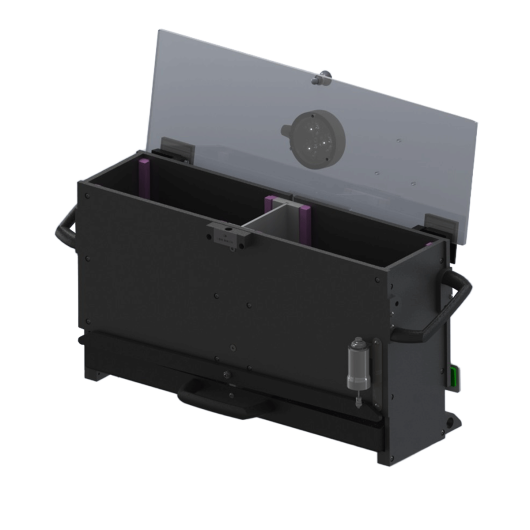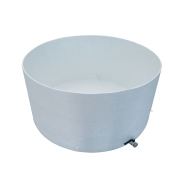

Active Avoidance Set-Up (Shuttle-Box) for rats and mice
A set up for testing active avoidance (also called automatic reflex conditioner or shuttle box), i.e. learning to predict the occurrence of an aversive event, based on the presentation of a specific stimulus. Enables performance of a wide range of avoidance experiments using a flexible schedule. Precise detection of avoiding aversive event. Manage up to 4 cages with one controller.
Features
- Part of the BEEHIVE SYSTEM
- Maximum Flexibility
- Tilting-floor detection
- Remote Control feature
- Great Versatility
Benefits
- The electronic unit encompasses all controls for up to 4 animal cages!
- Configure your own Avoidance-Experiment Schedules via the timeline function
- Reliable and precise detection of animal crossing
- Makes remote service and software upgrades extremely simple!
- The same controller can manage different conditioning tests. Ask for details!
Applications
Behavioral scientists are well acquainted with avoidance methods that have been used for several decades, originally by psychologists, who were interested in animal behavior.
These procedures were later exploited by neuroscientists, who specifically perform sys-tematic studies of the behavioral changes mainly produced by brain lesions, to define the functions of different C.N.S. sections.
Avoidance tests were soon extended to several other areas of research such as behavior genetics, psychopharmacology and behavioral toxicology. More recently, such use has become routine in animal model studies of aging and of Alzheimer-type dementia, including the search for new drugs of potential therapeutic value, consisting of attenuation of behavioral deficits.
- Inhaled Lavandula angustifolia essential oil inhibits consolidation of contextual-but not tone-fear conditioning in rats LS Coelho, NF Correa-Netto, MY Masukawa, AC Lima… - Journal of …, 2017
- Behavioral effects in adolescence and early adulthood in two length models of Maternal Separation in male rats M Banqueri, M Méndez, JL Arias - Behavioural Brain Research, 2017
- Camellia sinensis prevents perinatal nicotine-induced neurobehavioral alterations, tissue injury and oxidative stress in male and female mice newborns JS Ajarem, 2017
- Effects of Cholinesterase Inhibitors Tacrine and Galantamine in Pentilentetrazole induced Cognitive Dysfunction in Mice D Dimitrova, D Getova, V Nalbantova, G Durleva…, 2017
- Study of the effects of Galantamine and Memantine on Scopolamine Model of Cognitive Dysfunction D Dimitrova, D Getova, 2017
- C.I. Navarro-Francés et alia: “Influence of trait anxiety on the effects of acute stress on learning and retention of the passive avoidance task in male and female mice” Behav. Processes 105: 6-14, 2014
- P. Borracci eta lia: “Rat Embryo Exposure to All-Trans Retinoic Acid Results in Long-Term Congitive Deficits” Eur Rev Med Pharmacol Sci 18: 28-33, 2014
- D. Dimitrova, D. Getova: “Effects of Rivastigmine on Learning and Memory Processes in Rats Active Avoidance Test” Medicine 4.1, 2014
- D. Cutuli et alia: “n-3 Polyunsaturated Fatty Acids Supplementation Enhances hippOcampal Functionality in Aged Mice” Front Aging Neurosci 6, 2014
- G.N. Carmona et alia: “The Dense Core Vesicle Protein IA-2, but not IA-2β, is Required for Active Avoidance Learning” Neuroscience 269 (6): 35-42, 2014
- A. Buzescu et alia: “The Influence of Some Psychotropic Substances on Conditioning Using an Active Avoidance Paradigm” Farmacia 62(1), 2014
- O. Ortiz et alia: “Associative Learning and CA3–CA1 Synaptic Plasticity Are Impaired in D1R Null, Drd1a/Mice and in Hippocampal siRNA Silenced Drd1a Mice“ J.Neuroscience 30 (37): 12288-12300, 2010
- J.I. Lemos et alia: “Involvement of the prelimbic prefrontacortex on cannabidiol-induced attenuation of contextual conditioned fear in rats“ Behav. Brain Res. 207: 05-111, 2010
- N. Seferos et alia: “Mandibular bone density and calcium content affected by different kind of stress in mice“ J Musculoskelet Neuronal Interact. 10 (3): 231-236, 2010



